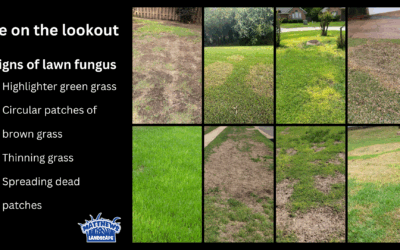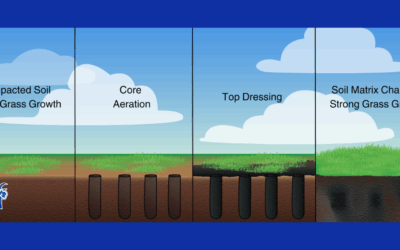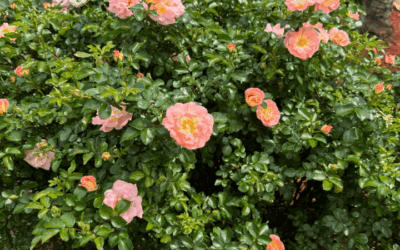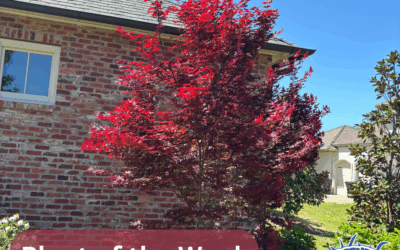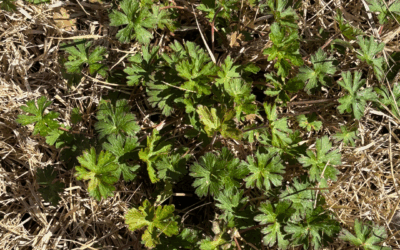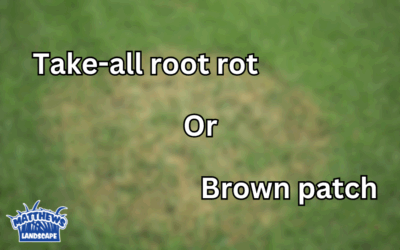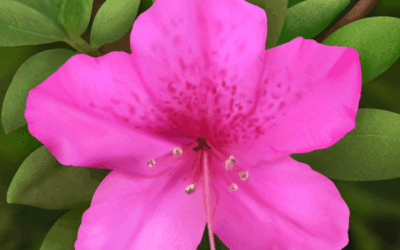Latest Post
Giant Coneflower: A Native Perennial
This week our plant of the week is Rudbeckia maxima, also known as Great coneflower, Giant coneflower, or Cabbage-leaf coneflower. https://www.youtube.com/watch?v=Ovbce3-tE7Y This tall, native plant is perennial in our area and attracts butterflies, and other local...
The Buzz Around Clustered Mountain Mint
Plant of the Week: Clustered Mountain Mint – A Pollinator-Friendly Native for Shreveport Landscapes https://youtu.be/V1TGXGAVjP0 Rachel is here to highlight this week’s featured plant: Clustered Mountain Mint – a native plant that thrives right here in the...
Know the Signs of Lawn Fungus
Happy Wednesday! It's supposed to rain in the coming days, which means it's a good time to think about lawn fungus. Fungus loves moisture and humidity, so you can prevent fungus by not over-watering your lawn. Your grass needs 1 inch of water per week, including...
Lawn Care Tips: Core Aeration and Topdressing
Spring is an important time for treating your lawn, so you can make sure your grass thrives throughout the year. Herbicides, fertilization, and mowing weekly all help promote healthy grass. Another set of lawn treatments we recommend are core aeration and topdressing....
Alternative to Knockout Roses
Many people love the look of knockout roses, but not everyone has the space for them. One alternative rose variety is the drift rose! These come in the same colors and look very similar, but are much smaller. They don’t grow as tall or wide, which means they don’t...
Spring Lawn Care
There are many factors that contribute to a healthy lawn, including proper watering, mowing, and drainage. Another important step to take right now is fertilizing, aka feeding the grass. We use a slow-release granular fertilizer that continues to feed the grass for...
Plant of the Week: Japanese Maple
Our plant of the week this week is the Japanese maple. There are many different types, but most people know the bright red variety. The leaves also come in shades of lime green and maroon. Depending on the cultivar, you can get them as tall as 20 feet tall or as small as a dwarf tree. They can live to 100 years!
Japanese maples do best in USDA growing zones 5-8 and do well in the cooler parts of Louisiana. This tree prefers partial sun to partial shade, and should be planted with mulch to protect its roots. Afternoon shade is best to protect Japanese maples from being burned by the summer sun. These can tolerate most soil types, but need proper drainage and should be watered during a drought. After they’re established, they’re considered low-maintenance. For the first few years, it’s a good idea to fertilize in early spring.
Fun fact: deep-fried maple leaves are considered a delicacy in Japan 🍁 If you have any questions, let us know!
Spring Flower Bed Prep
Spring is when everyone plants new flowers, and prepping your beds properly is very important! The soil you use should be fine, potting soil, preferably with sand in it to help with drainage. Our springs are usually wet and humid, and flowers sitting in wet soil can...
Weed Identification: Carolina geranium
Have you seen this weed in your lawn? This is Carolina geranium, a winter weed that's native to our region. Each of its leaves has 5 main segments, and it develops white or pink flowers when it blooms. Carolina geranium can survive in conditions that would kill many...
Look Out for Lawn Fungus
Now that lawns are out of dormancy, we're seeing lawn fungus like we do every year around this time. There are two main types of fungus here: Brown patch and Take-all root rot. It's important to know what each looks like so you can start treatment as soon as possible...
Plant of the Week: Southern Indica Azalea
Our plant of the week this week is the Azalea, specifically the Southern Indica species (Rhododendron indicum). They’re blooming right now all over town and Louisiana, plus they’ve been named one of the 2025 Louisiana Super Plants by LSU Ag Center! To be included in...

